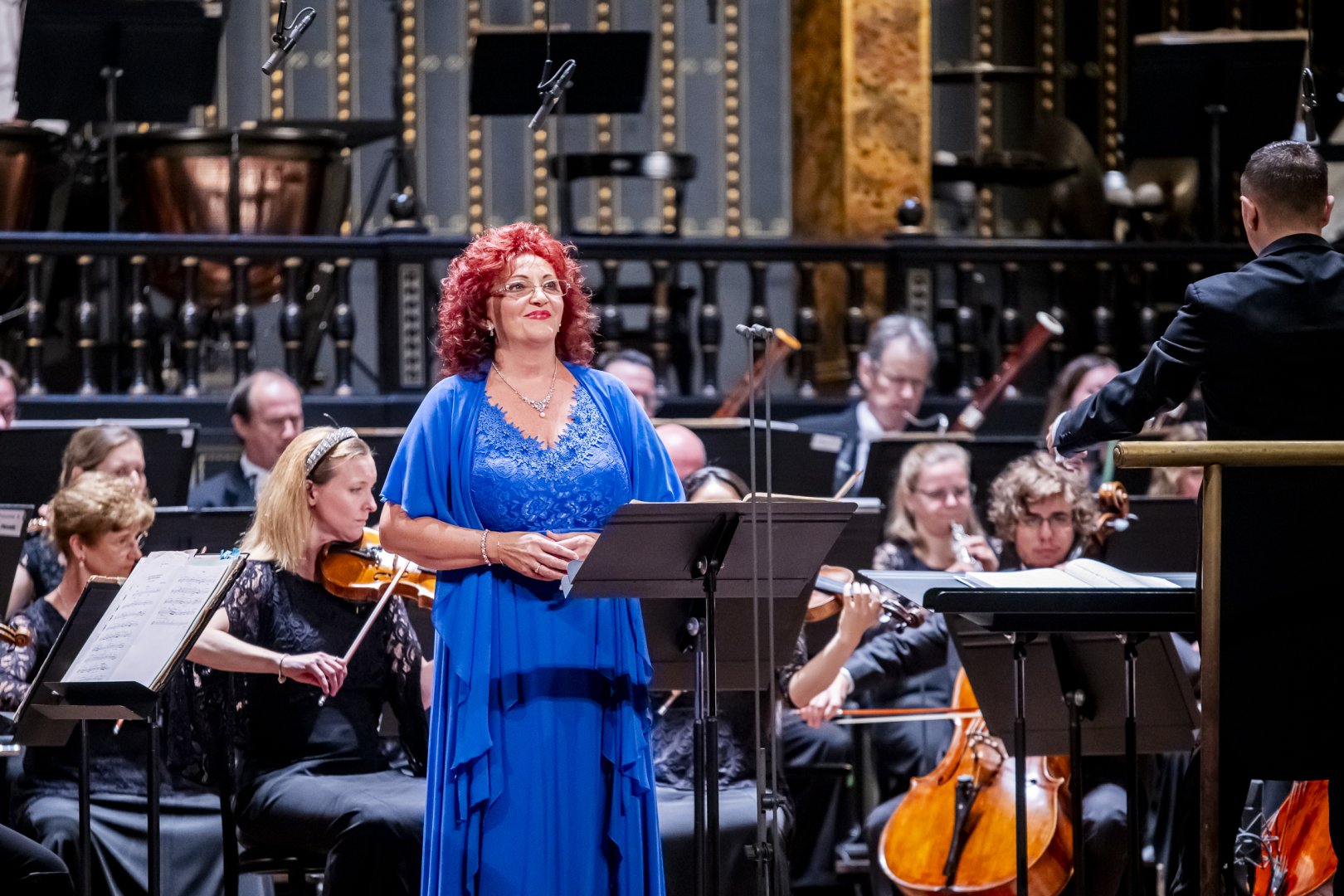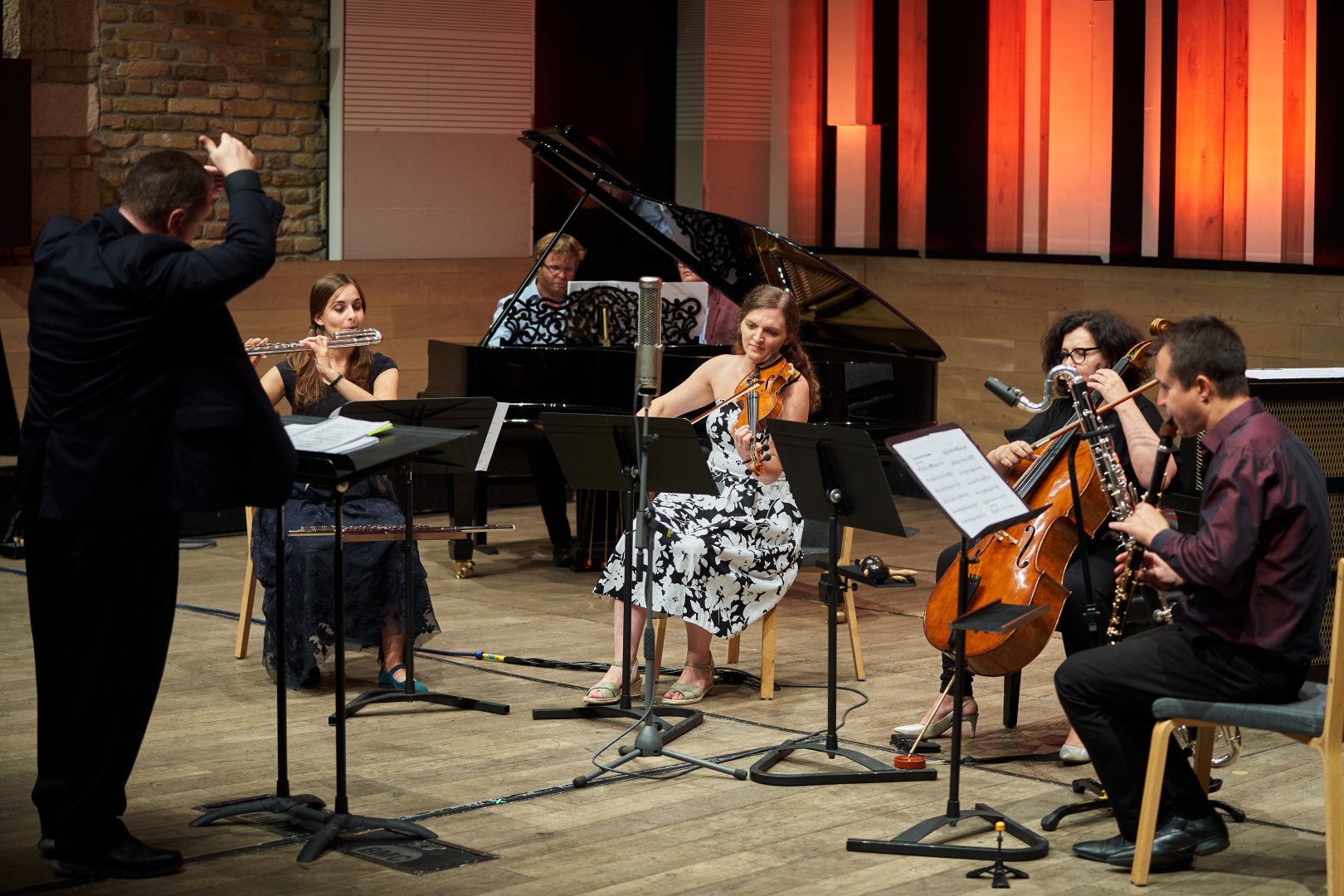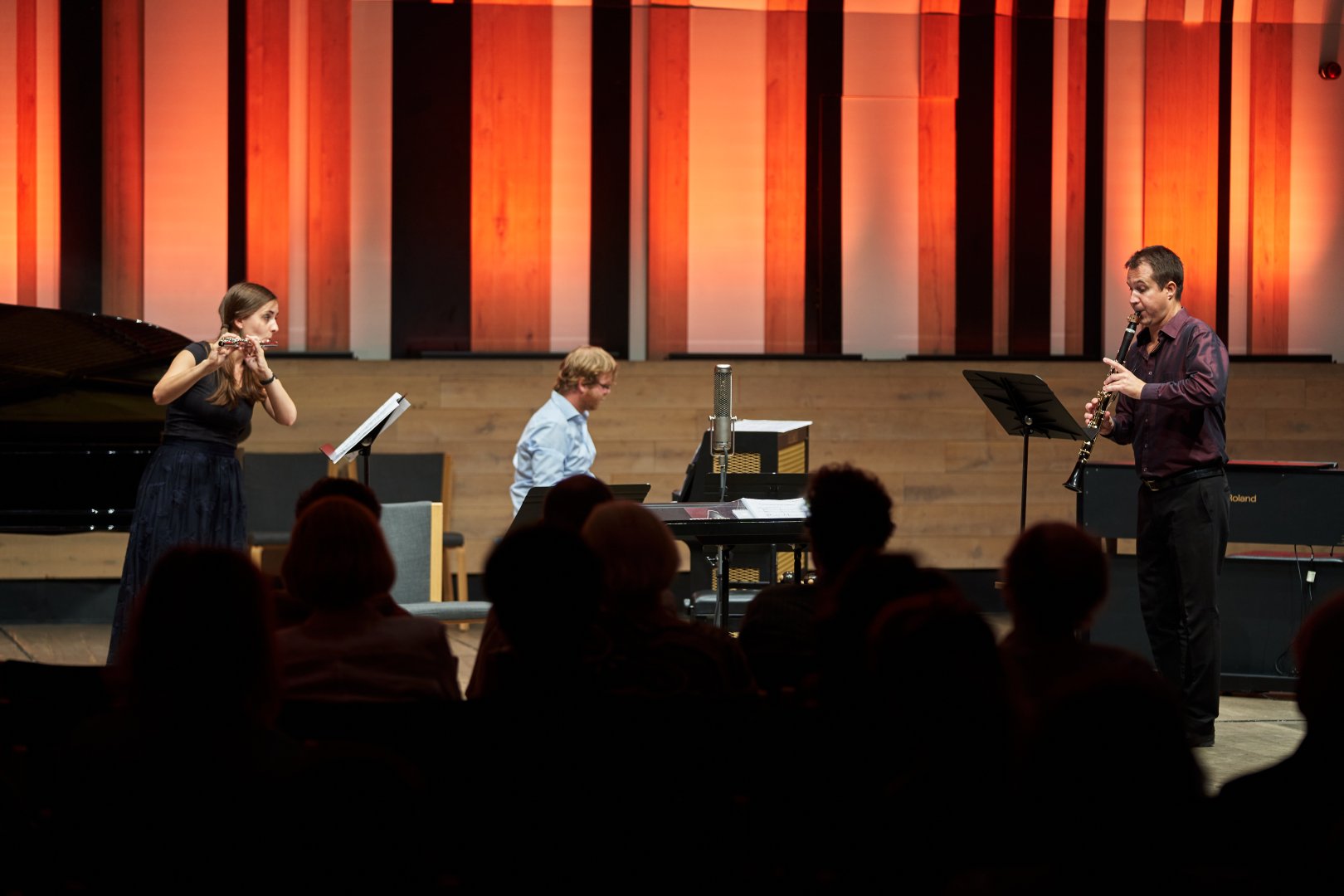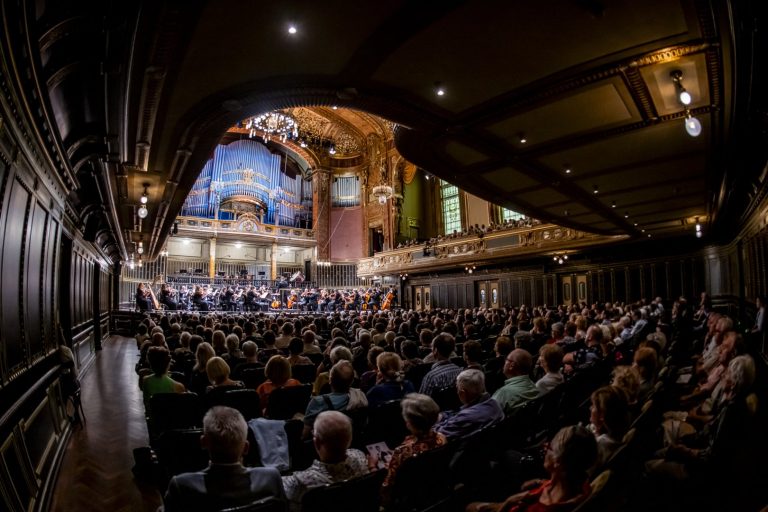The Máv Symphony Orchestra, with its music director Róbert Farkas, opened their season on 21 September with a program that was the first of several concerts dedicated to life-long love stories. The love-fest began with the orchestra’s show of love and appreciation to trumpeter Tamás Sipos, who received the ensemble’s Player of the Year award.
The musical choices, I’m happy to report, reflected a delightfully sophisticated level of not only Farkas’ and the orchestra’s tastes, but evidently the ticket buyers’ too. The packed Liszt Academy audience paid rapt attention to every note of Wagner’s “Siegfried Idyll;” R. Strauss’ “Four Last Songs;” selections from Prokofiev’s first and second suites of his “Romeo and Juliet” ballet score; and Saint-Saëns’ “Bacchanale” from “Samson and Delilah.” What all these highly programmatic selections had in common were opulent, full-bodied orchestrations with many solo opportunities within.
Written near the end of his life, the Strauss songs are some of the most challenging for a singer – not only because they require the ability to sustain a wide vocal range with exquisite control, but they also need the interpretive skills for bittersweet reflections on the last chapter of one’s life. The well-known diva from the Hungarian State Opera, Eszter Sümegi, was the perfect singer for this set. Her voluptuous tone and vocal finesse throughout brought luster and authentic feeling to the songs. Strauss’ rich orchestral colors were beautifully evoked, especially in the final song “Im Abendrot” where the setting sun meets the heart’s last desire.

Farkas’s leadership through the high drama of the Prokofiev suite brought us one thrill after another. The opening blast of dissonance that presages the story’s tragic end, the gutsy Dance of the Knights, the frisky tempos that describe societal scenes and dances, the murder of the temperamental Tybalt, and the deaths of Romeo and Juliet all painted an affecting and electrifying story under his baton.
As the perfect grand finale, the “Bacchanale” lifted everyone through the roof. This saturated orchestral orgy, initially announced by a slithering snake-song from the oboe and later echoed by the horn section taking over the seduction with maximum lust, generated a palpable explosion of ecstasy.
The search for the ‘Music Gene’
Conductor/composer Gergely Vajda was honored at the Budapest Music Center on September 15, ostensibly for his 50th birthday, but this occasion, featuring the UMZE ensemble, offered additional novelty: the scientific search for what could be called “the music gene:” is there such a thing?

The program featured five works by Vajda, preceded by two arresting solo clarinet scores by Jörg Widmann and Péter Eötvös, brilliantly executed by Péter Szűcs. Vajda’s first clarinet composition from 1993, “Light shadows—tremors” used tremolos as melodic statements, exploiting the instrument’s entertaining nature with joyous buffoonery.
The three following compositions by Vajda revealed ingenuity and invention in his two “Conversations with children” written six years apart, and especially his “Lo-fi Sonata” which challenged our ears to accept a detuned piano as the point of reference in a language of slides and stretches.

His final work employed gene research scientist from the USA, Dr. Richard M. Myers, as the unusual guest in the Hungarian debut of “The Music Gene.” Dr. Myers joined the group as the narrator (in English, with Hungarian translation on digital screens) who described the fascinating research he had done in discovering innate musical talent in human DNA. The orchestral accompaniment was full of humor, references to popular songs, sound effects, and a singer (Anna Molnar) who embodied the human voice as the original instrument of human communication.
Acknowledging the work of R.D. Laing, the Scottish psychiatrist and musician, Myers’ dialectic raised such questions as “how, do we explain perfect pitch?” and “is musical talent inherited?” The piece’s narrative tackled issues of what music actually is, and how we can define it as beautiful – or not. And finally, as a universal art form, is it culturally divisive, and if so, why?
Vajda and UMZE, as usual, have thrown us into the world of the new, the known, and the unknown, with surprising guideposts for our navigation.











